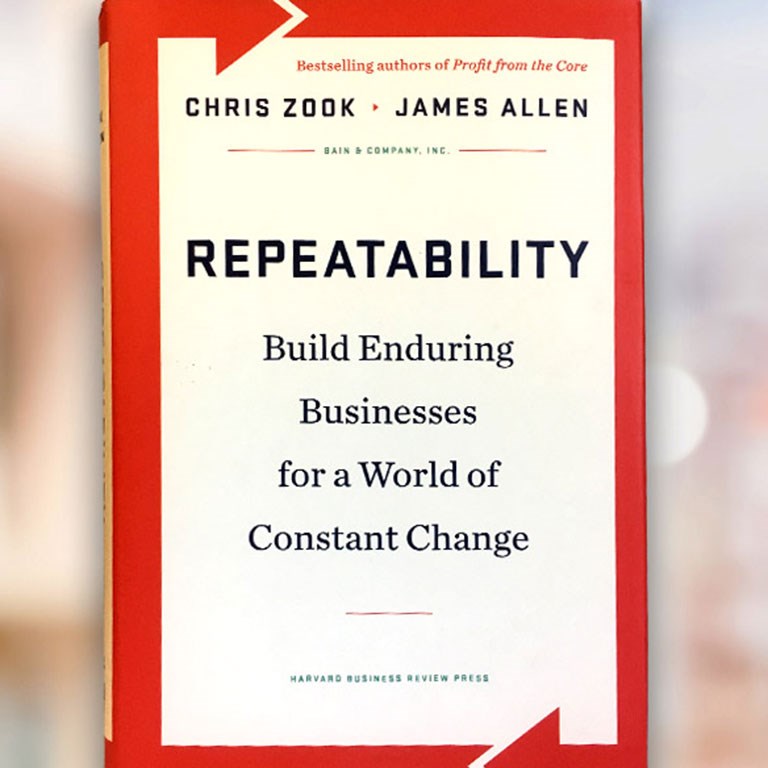HBR.org
The following post originally appeared on the Harvard Business Review Blog Network.
Did you know that an additional 0.1 second in the time it takes a web page to load can lead to a 1% decline in customer activity? Neither did I. But Amazon does. In fact, the company has about 500 metrics that it tracks every day, the majority of them relating to the customer experience. Many companies pride themselves on moving from quarterly to monthly customer feedback sessions. Amazon measures a feedback loop in seconds—or in tenths of a second.
In our book Repeatability, Chris Zook and I show how top-performing companies typically develop repeatable models that incorporate their strategy in front-line activities. These models reflect three fundamental design principles:
- Focus on what makes the company unique, and they ensure that this differentiation is what they actually do for customers, not just what they aspire to do.
- Embed the key sources of differentiation in the organization, working with front-line employees to create a set of nonnegotiable principles that embody the strategy and inform every decision.
- Ensure that the organization is agile, that it can adapt quickly to changes in the marketplace.
One path to this third goal—call it Type 1 feedback—is closed-loop communication with customers. The company gets daily or hourly feedback from buyers and responds with continual improvements.
That's what Amazon does. It tracks all those metrics. It responds quickly to customer queries and complaints. As George Anders points out in a recent article, the company obsesses about gaining insights from customer feedback and taking quick actions. "Some Amazonians try to reduce out-of-stock merchandise. Others race to build a bigger library of downloadable movies. Intricate algorithms turn one group of shoppers' past habits into custom recommendations for new customers. Hourly bestseller lists identify what's hot. Weekly reviews keep track of who is on course and where corrective attention is needed."
The result of all that effort? A compound annual growth rate of 31% over the past 10 years and a stock price that outperformed eBay over the same period by a factor of 18.

Repeatability
Learn more about how executives use Repeatable Models® to build enduring businesses.
Though Type 1 feedback helps you with continuous improvement, it doesn't always confirm that what you're doing is right for your customers or better than the competition. For that you need Type 2 feedback. Gathering Type 2 feedback lets you take a fundamental look at whether your repeatable model remains competitive and whether there are discontinuities in the market that could undermine it.
When Sir Christopher Gent headed Vodafone in the 1990s, for example, he brought his management team and board together every year to ask what business the company was in.
The question forced the team to deconstruct the business and reconstruct it based on technological developments and competitive moves. That was essential in the mobile-phone industry back then, because Vodafone and others faced constant questions, such as whether they should be a mobile-only or mobile-and-fixed business, and whether they should move into retail stores. "These sessions often raised serious challenges to Vodafone's repeatable model," Gent remembers, "leading to long debates that might otherwise not have taken place about when it was appropriate to adapt versus continue with the current model."
In the 1990s, companies could conduct such a process annually. Today, they must develop faster systems for asking and answering the same kind of questions. Huawei, the rapidly growing Chinese challenger to network equipment incumbents such as Ericsson and Alcatel-Lucent, even has a permanent office of restructuring, reporting to the chairman, and focused on identifying external threats to the company's model.
Most companies believe they have better feedback systems than they actually do. They conduct lots of anonymous customer surveys, but they rarely collect daily and hourly feedback and make it available to their front-line teams. They sponsor one-off presentations of "megatrends" or "potential discontinuities" but rarely discuss how to adapt their business model to the future. For example, few Western companies today are shifting sufficient resources fast enough to growth markets in the developing world. Few are transforming their core businesses by radically simplifying their operations and seeking out new pockets of growth through better customer delivery and innovation in developed markets.
We often test our clients with what we call the "fighting the future" question. We ask: how much of your board or executives' time is devoted to discussing how to fight the future rather than embracing it? How often are you defending a current proposition against what you know is a better proposition from a competitor?
When the percentage of management time gets to 25, beware. When it gets to 50, turn out the lights. Your customers have probably stopped giving feedback and moved on.
James Allen is a partner in Bain & Company’s London office and coleader of the firm’s Global Strategy Practice. He is coauthor, with Chris Zook, of the book: Repeatability: Build Enduring Businesses for a World of Constant Change (HBR Press, March 2012).